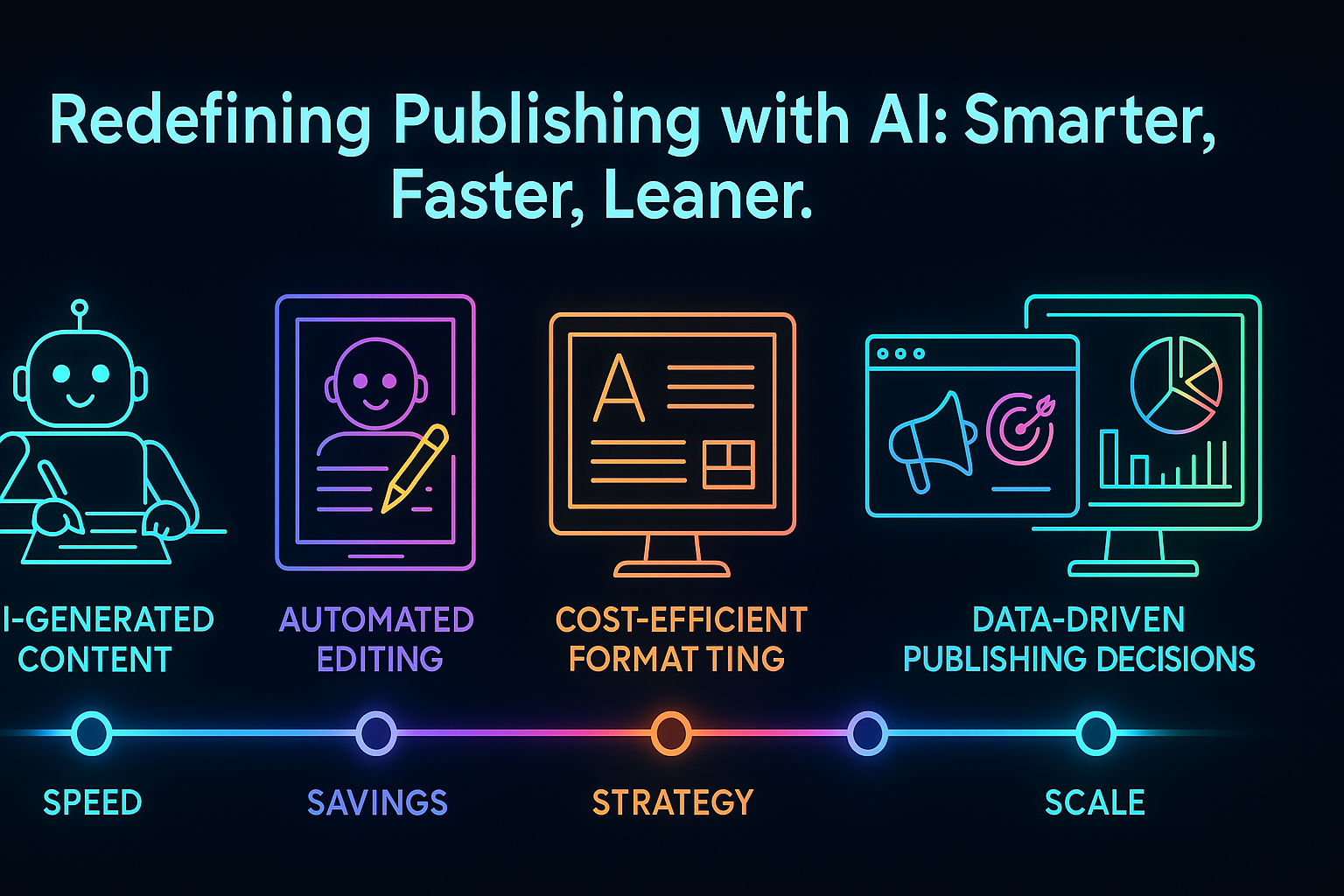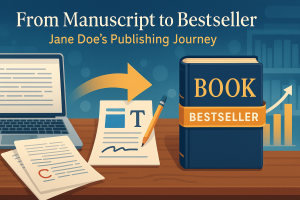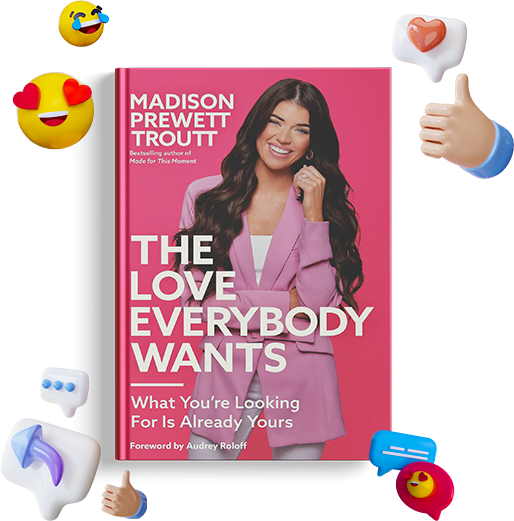Suppose you are managing a startup publishing firm but lack digital resources to publish high-quality manuscripts. Employing traditional publishing sources is time-consuming as it takes 3 to 4 years to produce, publish, and distribute the published books in the market. A lengthy publishing timeframe, along with limited creative control and inaccessibility to digital technology, makes the Book Publishing Services process a challenging and daunting task for new publishing houses. A slower pace of book publishing, inadequate knowledge of digital publishing tools, and modern publishing trends and practices caused many publishing agencies to lose their publishing work. Consequently, these barriers have prevented traditional publishing houses from knowing the changing marketing dynamics and adapting to the evolving market demands.
Today, the publishing industry is entering the crossroads of innovation. Content development, editing and proofreading, book designing, distribution, and marketing are undergoing digital transformation due to the integration of artificial intelligence publishing technologies. The rise of e-books, audiobooks, and other digital formats has facilitated readers and expanded the reach of publishers and authors in the global e-book market. According to Future Market Insights (2024-25), the e-book market is expected to reach $32 billion by 2032, while digital revenue in the e-book market is expected to reach US$14.92bn in 2025.
Technological advancement in the publishing industry has driven publishers to rethink their publishing standards and adapt to AI content creation, design, and publishing tools that have brought positive impacts on the publishing industry, revolutionizing the manuscript creation, design, and publishing. Recent data shared by Digiday+ Research explicated that many reputable Book Publishing Services companies globally have started employing artificial intelligence (AI) and machine learning (ML) technologies to streamline their content development, editorial, production, and publishing processes. Moreover, startup firms and businesses, understanding the significance of AI tools, have planned to use AI text generators to bring innovation in editing, copywriting, and publishing.
Reading this Publishing Guide allows the Best Book Publishers to Leverage AI Publishing Tools to Become a Beacon in Publishing!
Whether you are an independent publisher or are running your publishing company and planning to reinvent your book publishing and printing businesses, this informative guide helps you explore AI’s role in content creation and publishing strategies. You will learn the historical perspective and transformation of manual processes to digital innovations in publishing. Right Publishing Partner insights can further guide you in aligning your strategies with industry best practices.
The blog lets you know the evolution of AI in publishing and how it has streamlined content creation. New writers will gain knowledge about AI content development tools such as GPT, Grammarly, Jasper AI, and other writing tools. Learning the usage of different AI-powered writing software helps writers overcome writer’s block and boost their writing expertise.
The next part assists editors in utilizing AI editing tools that help copyeditors review the manuscript in depth. The software with an auto-grammar check facilitates publishing supervisors to know grammatical, and syntax errors and typos. The proofreaders analyze and fix the formatting and structural issues and optimize the layouts for print books and e-books.
Publishing experts gain knowledge of AI analytics that helps them gather users’ feedback and change market trends. Extensive blog reading further helps book marketers learn about how to market your own book strategies. Self-publish authors and publishers will learn the cost implications of AI in publishing, including insights on amazon self-publishing cost.
The last part of the article deals with copyright and legal ownership issues. Indie book publishers will learn AI’s role in protecting the original works of authorship. The readers will gain significant knowledge of new advancements in AI algorithms that will assist them in modernizing their publishing model in the digital publishing era.
The Evolution of AI in Publishing
The historical perspective of book publishing dates back to the 1971 era when a university student named Michael Hart got access to the university’s processor. He explored the standard format for manuscript typing. The typed draft was sent to different publishing platforms to let the audience view the world’s first e-book. The author’s initial version led to the establishment of the Johannes Gutenberg publishing house in the 1980s. The invention of the printing press by Johannes Gutenberg developed the printing and publishing industry. Mass printing made books more affordable and accessible to a vast audience. This laid the foundation for modern publishing.
Heading towards the early 21st century, many publishers have shifted from traditional publishing to innovative publishing trends. Digital publishing brought convenience and accessibility to e-readers, bringing a massive increase in e-book publication, audiobooks, and other forms of digital printing. Digital transformation gave rise to self-publishing platforms that benefitted independent authors and publishers. Self-publishing houses gained creative autonomy in printing, marketing, and distribution of manuscripts. E-book platforms empowered indie authors to expand their publishing businesses and increase online book sales. Insights on how many pages should a book be further assist in optimizing book design and reader engagement.
How Major Publishers Are Leveraging AI in Publishing?
Over the past few years, major publishers, including Penguin Random House, Hachette, and HarperCollins have been increasingly incorporating AI by establishing their clear and transparent AI guidelines related to content creation and editing, book cover designs, publishing, improving metadata and search functionality, analyzing data, competitor pricing, and copyright and intellectual property issues.
Key Milestones of Major Publishers in AI’s Development and Adoption
- Publishing Houses Intend to Promote Creativity in Content Creation and Storytelling Through AI Software
In the realm of content creation, renowned book-writing and publishing services like Penguin Random House employ AI-powered tools and machine learning algorithms to spark creativity in published work. For instance, using AI writing tools such as NovelPad, Plottr or Scrivener helps in creating a brief outline of the chapters, character development, scene-tracking, and evaluating the settings of the novel. - Publishers Are Increasingly Recognizing AI’s Capacity to Handle Book Editing and Proofreading
Whether self-published authors intend to self-edit their manuscripts or hire experienced editors for manuscript proofreading, AI editing tools make the editing process smooth and easy for copyeditors. To maintain the highest editorial standards in publishing, they utilize outstanding writing and editing AI software. - Publishers Employ AI-driven Tools for Metadata and Search Books
To make book searching easy and convenient, professional Book Publishing Services employ machine learning algorithms. The tools create eye-catching keywords, book titles, metadata, and book descriptions that instantly grab readers’ attention. - Copyright and Intellectual Property
The publishing agencies have developed AI principles and policies related to ethical considerations and plagiarism concerns. Many publishing companies have filed complaints against AI companies for using copyrighted materials illegally. To prevent data breaches and infringement and ensure copyright protection of AI-generated content, the publishers provide detailed records such as links to original material, the prompts, and variations in input provided by the writer. They ensure that content without proper licensing or credible sources will not be used by the publishing house. In case they opt to use external content for training or other purposes, they get permission from the accredited content owners. Maintaining transparency and collaboration with creators demonstrates the core strategy of respecting and protecting the original work of the writers. Publishing companies use AI tools to secure the rights to their AI-assisted works. The Copyright Clearance Center (CCC) tool has increased its licensing options to meet the growing needs of companies leveraging AI content. - Publishing House Analyze Pricing Data and Competitor Pricing Strategies
To determine pricing data and analyze competitor pricing strategies, the publishers use AI-driven tools that maintain optimal book pricing. The tools analyze real-time market trends, and competitor pricing and set appropriate pricing that entices readers to make purchases through physical retailers or online bookstores.
AI’s Role in Content Creation
AI-powered Content Creation Tools Have Transformed Writing
From idea generation to creating an outline, and an interesting storyline, designing spectacular book covers, and performing grammar checks, the AI publishing tools have reshaped the publishing process. AI editing tools assist writers and editors in enriching the quality and style of their work. Beginning with Programs like Microsoft Word’s grammar checker, AI experts developed more advanced tools such as Grammarly, and the Hemingway editor software that conducts automated proofreading.
Some of the commonly used AI-powered editing tools, including Grammarly, Squibler, and ProWritingAid help editorial experts comprehend the context in-depth and analyze structural flaws. AI book-writing tools have a reader-friendly interface that performs narrative analysis, such as reviewing the narrative arc, pacing, sequence of events, character development, and typographical errors. AI copywriting tools such as AI, Jasper, Word Tune, and QuillBot facilitate writers in modifying content. The tools add high-quality vocabulary and generate attention-grabbing headlines and titles that help create an engaging manuscript for the readers.
NLP is Transforming Content Creation
Book-writing services employ NLP algorithms for contextual analysis. AI and NLP technology incorporated into editing software helps editors with the accurate editing process. With NLP technology, publishers automate editing tasks such as grammar and language issues, improve vocabulary and syntax, and fix book formatting flaws. AI with NLP integration has streamlined the proofreading of manuscripts by detecting various flaws in the text, such as repetitive and ambiguous ideas, long sentences lacking consistency, usage of adverbs, passive voice, and over-complicated sentences. The addressing of contextual errors is followed by suggestions that help copy editors and writers refine the draft to captivate readers.
AI-driven Natural Language Processing (NLP) algorithms also assist writers with generating various types of content, including articles, book summaries, descriptions, storylines, and dialogues, and summarizing long and complex texts into a concise and comprehensible format. Thus, NLP technology has revolutionized publishing through content enhancement, improving the accuracy and clarity of written text, refining the tone and style of the content, and optimizing book discoverability.
AI-Optimized Book Designs
Publishing houses are leveraging AI tools to refine various aspects of book creation such as creating eye-catching front and back book cover designs and the layout of the book. Commonly used AI design tools such as Canva, Adobe Express, LightX, and Stockimg.ai facilitate book designers by providing a user-friendly interface for designing book covers. The illustrators also use text prompts and customizable styles to create exceptional book covers that capture the reader’s interest and increase the value of the book in the market. Fictional writers and designers create fantasy and dream-like images for book covers that evoke emotion and intrigue in readers. Simple and personalized designs, attractive color patterns, and graphics mesmerize readers and expand book reach in bookstores, online retailers, and libraries.
Enhancing Human Creativity with AI
How AI Serves as a Creative Assistant in Helping Overcome Writer’s Block and Providing Inspiration and Valuable Insights
If you are a novice book writer, you might be facing writing challenges. Working on an extensive writing project such as fiction, novel, or memoir might be hard for you. Initially, the content lacks consistency, and sentences and paragraphs look haphazard. Moreover, the storyline is not properly developed, which makes the narrative monotonous for publishers. At this stage, many writers develop writer’s block such as feeling disoriented and blank and staring at the empty page, unsure where to begin. Publisher’s feedback and criticism demotivate writers and they keep judging the quality of their work. Feeling disheartened, many writers think of quitting.
To keep writers enthused, book writing services have introduced numerous writing software that boost the writing potential and creativity of writers. Inexperienced authors and bloggers are leveraging AI-powered tools that enhance the quality of their work. Let’s suppose an author gets stuck in the initial writing of the book, they can employ Squibler or Scrivener AI software that provides creative and resourceful ideas to create an impressive introductory chapter. The writing tools comprise templates that help new writers generate a plot, develop a significant outline of the chapters, and craft scenes and characters. With AI assistance, the fictional writers craft captivating narrative elements and also manage word counts.
Another versatile and user-friendly AI tool, Jasper AI, makes writing easier as it speedily generates creative content for any genre as required by the writer. Novel writers create chirpy and impressive scripts and write descriptions. The software breaks the books into chapters and sections and keeps the writing process organized. To boost authors’ interest in writing and to track their writing performance, publishers use Freedom, an AI productivity software. The focus mode blocks all the existing distractions and offers a distraction-free writing experience.
Chat GPT has emerged as a powerful content development tool. AI-driven software understands context and the prompts sent by the users. Having a vast database, the AI algorithm conducts extensive research related to the topic. They gather data, statistics, and facts to develop knowledge-filled· quality content for writers. AI-powered tools facilitate writers in reducing the time spent on research and quickly providing factual and helpful content.
Personalization and Adaptive Writing styles using AI-powered assistance
AI-powered assistance improves the adaptive writing styles of the author. AI Text Enhancer enables writers to improve their comprehension such as maintaining the consistency and logical flow of the text. The tool fixes grammatical issues, typos, and spelling errors, and simplifies syntactic structures. Thus, improve the readability of the content by developing simple and easily understandable content for the audience.
Addressing Ethical Concerns! – Is AI-Generated Content Still Being Considered Authentic Creativity?
Though AI algorithms have transformed the content production industry, they remain limited in replicating the creativity of humans. As it is observed, many AI tools, such as ChatGPT, Writesonic, and NovelAI develop imaginative stories and create articles based on users’ prompts and queries. The software, having a contextual understanding of the content, prepares content that resonates with the author’s creative outputs. However, AI-generated content lacks emotions and sensory perception so they are unable to build connections with potential readers. Writers add their personal experiences and creative flair to their work that exhibits their creative expression. Human writing involves an interplay of sensory perception and emotions that help create attention-grabbing content.
Another interpretation is that AI tools operate with programmed algorithms and reorganize content by gathering data from different credible sources. AI software is trained to replicate certain writing styles or genres, but it cannot originate new or innovative ideas. So, they lack the open-ended problem-solving capacity. Thus, AI continues to expand its creative capabilities, yet, it has limited functions as compared to human creativity, and it identifies their dependency on human-created content.
AI and the Publishing Process
How AI-driven Tools Automate the Revision Process, Improve Book Formatting and Optimize the Layouts
A major challenge that self-published authors experience is transparent and rigorous editing and refining the manuscript. With all the advancements in artificial intelligence (AI), editing has become more accessible and easier for independent writers and professional editors. AI book editing tools such as Grammarly, Hemingway Editor, and The Reedsy Book Editor have streamlined the editing process. The editorial assessment performed by these tools includes a detailed analysis of the manuscript. Using a reader-friendly interface of the tools enables editors to assess the quality of the text, whether the content, style, and fonts are readable or unclear for readers. The tools highlight the paragraphs with punctuation errors and identify missing transition words, factual inaccuracies, and excessive usage of passive voice.
The tools examine complex writing issues such as style, tone, and narrative consistency. Utilizing AI-driven tools, the copyeditors have the flexibility to improve book formatting and organization such as creating a title page with the book title, author’s name, publisher’s information, and ISBN. Incorporating a table of contents that demonstrates chapter headings and their corresponding page numbers. The other book structures include a preface, glossary, index, and bibliography. The tools ensure that the chapters and sections of the manuscript have coherence and logical flow.
Professional editing through AI software certainly benefits the authors and editors, as it reduces the time and resources employed in manual editing. The automated editing software competently handles technical aspects such as drafting fascinating narratives in less time to be included in the book. Moreover, editors smoothly reorganize the text by removing irrelevant details, adjusting the text in different sections, and rephrasing chapters for clarity or bringing more creativity to the writing style. Thus, in merely 15 minutes, the writers get a well-structured, polished manuscript ready to be published.
AI in Book Marketing & Distribution
How AI-powered Tools Boost Personalization and Recommend Books Based on Reading Behavior
To get peer recommendations about reading a book, book publishing companies employ Artificial Intelligence (AI) book recommendation systems to assess demography choices, perceptions, and trends. Machine learning tools analyze historical sales data and market trends to predict future user preferences that help boost book marketing and sales. Machine learning algorithms categorize users into different groups based on their reading habits and preferences. Collaborative filtering is a significant method in recommender systems that analyzes users’ ratings regarding the book genre they read in the past or present. The system also compares a user’s ratings or interactions with the books and recommends the books to a vast audience who have not read the book yet.
Book content analysis with NLP technology assesses different features of the book, themes, genre, writing style, and benefits of reading the manuscript that boost user preferences. Feedback-based learning and Review Analysis integrated with an AI algorithm analyze book reviews written by readers who have developed positive interactions with the manuscript. User reviews allow other readers to better understand why they prefer reading the book.
Book writing services and other platforms improve the book discovery experience for other readers by promoting the manuscript among the literary communities, libraries, and book reading platforms. The platforms allow global readers to join these forums and get access to the manuscripts of their choice. Moreover, the readers get familiar with new books and authors that others prefer reading. The platform analyzes reading and purchasing trends, assesses reading behavior, and offers personalized suggestions. An online catalog provided by writing platforms further helps in exploring new books based on the user’s preferences.
The Impact of AI on Search Engine Optimization (SEO)
Book publishing services have enhanced their content optimization with AI tools. AI algorithms analyze reader’s choices and preferences and deliver more personalized and relevant search results. For instance, Searcholic and Bookabout book search engines create relevant keywords that help the audience search for the preferred genre of books. Moreover, AI-powered search allows AI tools to understand user queries and provide accurate, validated, and comprehensive answers that lead to quick discoverability of books. For instance, The ChatGPT platform and Jasper AI offer relevant details and features about the books that make it easier for audiences to locate books and authors in a saturated market.
AI-driven Marketing and Advertising Strategies
Using AI tools such as Jasper AI and Open AI’s GPT models allows marketers to create highly personalized marketing campaigns. The software identifies potential audiences and performs market surveys to gather relevant information related to buyers’ past purchases, knowing their reading preferences, genre interests, and existing and changing trends. Once marketers gain significant targeted marketed data, they employ AI tools to generate marketing content such as brochures, newsletters, blog posts, book reviews, appealing book covers, and blurbs that hook potential readers. Different marketing materials exhibit the features of the published manuscript. Thus, it offers highly personalized recommendations based on the reader’s choices and reading trends.
AI-powered chatbots have come up as innovative tools for boosting customer engagement. AI chatbots can interact with potential readers in real-time. They promptly reply to user’s queries and feedback on websites and social media and resolve issues related to book recommendations, book pricing, and purchasing process. A direct and interactive form of communication helps in increasing book marketing efforts and further helps boost the reader’s engagement with the author and his published manuscripts.
AI’s Role in Social Media Engagement
Book marketing services leverage AI tools to increase their book promotional activities on social media. It implies them employing different AI tools to create impactful marketing content that attracts a vast audience. Social media marketing campaigns comprise creating engaging posts with eye-catching text, visually appealing book covers, book trailers, images, and effective hashtags for different audience segments. Using AI-driven tools assists social media experts to analyze the performance of previous social media posts, and suggest recommendations to enhance the quality of the posts. The tools help in creating compelling headings, and adding visual content and paid ads that improve the online presence of the publication. Moreover, the tools create optimal posting times, and track reader engagement across various digital channels. It enhances reader engagement and entices them to buy the book.
AI in Traditional vs. Self-Publishing
AI tools assist both traditional and self-publishing companies in streamlining publishing tasks such as manuscript production, editing, formatting, marketing, publishing, and printing. If you are running a traditional publishing house, you can leverage AI tools to fix content issues in the manuscript. The editing software assists copywriters in navigating grammatical and sentence structure errors. They highlight insignificant paragraphs, multiple words or complex sentences, and other irrelevant details. With AI editing assistance, the editors proficiently enrich the quality of the draft and create an error-free document that is comprehensible for the readers. Furthermore, AI-powered editing software reduces editing time ensuring consistency and accuracy in book editing and formatting.
AI has streamlined the publishing process by facilitating publishing houses to create stunning book cover designs and layouts. The designers employ AI-driven design tools such as Adobe Illustrator, Canva, or GIMP to create illustrations, logos, design art, and graphics that relate to the book’s theme. They also add color patterns and typography that generate aesthetically pleasing cover designs. Thus, professional book covers increase the marketability of books and sales potential.
AI-powered Self-Publishing Platforms and Tools
For self-publishing companies, AI tools serve as a partner in offering creative control in managing publishing tasks. AI-powered software automates writing tasks and assists in the smooth editing and structuring of the manuscript. Moreover, designers leverage AI design software to create fascinating book cover designs. With user-friendly online platforms, the publishers convert books into different print and published formats and create well-structured and polished e-books and audiobooks. Digital publishing enables publishing houses to expand the book’s reach in the global e-book market.
Moreover, self-published companies have modernized their distribution services using AI tools. Publishing houses such as Penguin Random House, and Amazon have enhanced their book distribution services by creating a global marketplace. Employing advanced AI tools, they have established distributing networks and channels, including major online bookstores and libraries that promote published manuscripts across the globe. With AI-advanced printing technology, Print-on-Demand has leveraged publishing houses with the convenience of printing single or multiple books as per the demand of consumers. Consequently, employing POD services has helped reduce time and publishing costs and eliminates the risks of overstocking and unsold inventory. Thus, AI software leads to the prompt delivery of books and drives higher book sales and revenue.
Cost Implications of AI in Publishing
How AI reduces operational costs through automation
Publishing companies employ AI-driven tools like Robotic Process Automation (RPA) that automate data entry, invoice processing, and inventory support. It reduces manual involvement and speeds up the book production process. Moreover, the tools help publishers to analyze existing market trends and consumer purchasing patterns. Consequently, the tools assist publishers in setting appropriate pricing based on real-time market conditions, customer preferences, and competitor analysis.
AI-driven tools help publishers get involved with a pre-press automation process. It includes automating tasks such as font matching, color correction, and image resizing, and making creative design works. With AI algorithms, book publishers analyze print quality, and detect errors before the draft is sent for printing. Prompt identifying and fixing printing and publishing errors prevent costly reprints and accelerate book production.
By automating resource allocation, AI algorithms streamline the book distribution process. Publishers can effectively manage inventory, and optimize logistics, and supply chain. AI technology also reduces warehouse and labor costs and decreases shipping charges. Thus, speeding up workflows, improved operational efficiency, and cost-effective manuscript printing and distribution services.
AI and the Future of Publishing
Today, modern publishing houses employ modern content management systems (CMS) for storing and organizing content. Having been equipped with AI capabilities, the tool gathers data based on provided prompts and queries by the author. AI effectively analyzes content and classifies it into predefined categories. They prepare impressive content that resonates with user’s requirements. Book publishing services have developed advanced editing software that comprises proofreading features. The tools detect and fix design and development flaws, grammar and spelling errors, contextual faults, and formatting issues.
Advanced writing and editing tools like Atomic Reach and Hemingway Editor use a scoring system to evaluate the readability of the content. They prepare an impressive and attention-grabbing manuscript for the readers.
Metadata and indexing are operated through AI search engine tools. Publishing companies develop relevant metadata and keywords that are crucial for the visibility of the books. As the audience searches for the required book on an AI search engine, it automatically tags the content and increases the organic visibility of manuscripts in search engines.
Adopting advanced AI marketing software helps marketers in crafting engaging marketing campaigns. The marketing strategies generate mass awareness of book launching activities through utilizing digital platforms such as landing pages, social media, and email marketing. The AI software includes an intuitive user interface that effectively manages the entire publishing process such as managing book production and workflows. The software provides data-driven insights to new publishers regarding making informed decisions related to book production, designing, marketing and budget allocation, and quick dispersal of books. With quick AI distribution networks, the publishers ensure smooth and quick accessibility of books for a global audience.
Machine learning algorithms predict future book sales trends. Analyzing reading patterns, to monitoring market trends in real-time helps publishers to adapt quickly to changing trends to increase their online presence and boost sales and revenues.
Recapitulate
Whether you are a self-published author or running a book publishing firm, you can streamline book publishing by employing AI technology. The book publishing industry is transforming with the integration of AI technology. Various AI algorithms assist publishers in automating tasks comprising content creation, editing marketing, and distribution. AI-powered content creation tools help writers overcome writer’s block and keep them motivated towards writing. AI software such as Ulysses or Zoho Writer has a simple interface that keeps writers engrossed in writing. Moreover, AI-powered writing assistance streamlines the writing process by offering plot templates. Fiction writers can easily craft narrative outlines, book descriptions, characters, and other essential elements of the fiction. Quick and efficient AI editing and proofreading tools analyze complex aspects of language such as grammar and syntax errors. AI text editor highlights extra word choices and adverbs in the text and also provides suggestions on how to fix them. It improves manuscript formatting and refines the tone, and style of the writing that hooks readers.
To promote their book marketing efforts, the publishing services leverage AI marketing strategies. Machine learning, data analytics, and AI-powered tools offer robust personalized marketing assistance. From analyzing market trends to understanding consumer preferences, AI tools develop fascinating book cover designs with compatible color patterns and graphics. AI assists in crafting engaging marketing campaigns for different digital platforms. Creating impressive social media posts with eye-catching captions and hashtags attracts potential audiences. AI-powered chatbots have enhanced customer engagement as they proactively interact with potential readers on websites and social media platforms. AI helps self-published authors create personalized, tempting marketing campaigns that boost positive engagement with the book. The AI-driven landscape continues to evolve, bringing innovations that have streamlined the book publishing process. How to market your own book strategies and leveraging amazon self-publishing cost insights ensure that employing advanced AI tools and strategies comprehends the changing dynamics of reader interactions and has brought personalized and engaging experiences for readers.









